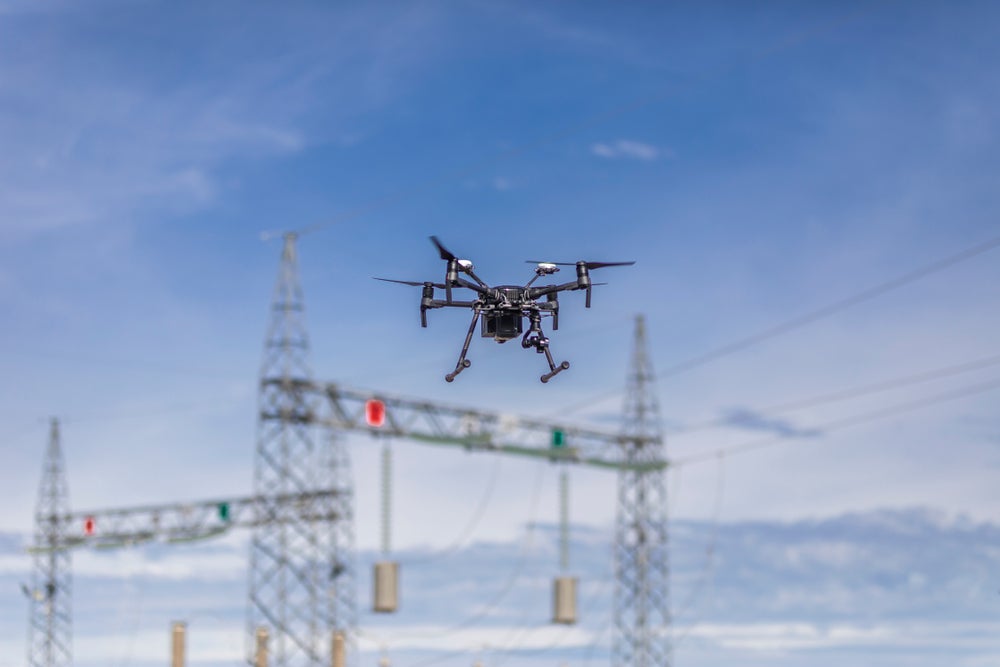
The global drone logistics and transportation market was worth $7.5bn in 2020. According to Emergen Research, that figure will reach $32bn by 2028.
The increasing use of drones for the faster delivery of goods, combined with the growth of the e-commerce sector, increasing investment in research and development in drones and other advancements in technology were cited as some of the key factors driving market revenue growth.

Discover B2B Marketing That Performs
Combine business intelligence and editorial excellence to reach engaged professionals across 36 leading media platforms.
Initially used for military purposes only, drones are being increasingly used by the logistics and transport goods sectors all around the world.
The UK government, for instance, has been developing the idea of drone corridors to be rolled out across the country to make the delivery of goods smoother and faster. In mid-2022, it gave its approval for Project Skyway to go ahead with the creation of a 265km unmanned aerial vehicle (UAV) corridor – also known as a drone corridor.
What benefits will drone corridors bring?
According to PwC’s recent Skies Without Limits v2.0 report, adopting UAVs in this way could result in £22bn of net cost savings in the UK up until 2030, a reduction in carbon emissions of 2.4 million tonnes in that time and the creation of 650,000 jobs.
The benefits that using drones for delivery could bring to the logistics and transport goods sectors are many – and many are paying attention.

US Tariffs are shifting - will you react or anticipate?
Don’t let policy changes catch you off guard. Stay proactive with real-time data and expert analysis.
By GlobalDataCheaper and faster deliveries are obvious benefits, but using drones also minimises labour costs too, and makes a company less reliant on human availability.
The use of drones will also reduce shipping costs and drastically reduce transportation expenses related to truck capital expenditures such as maintenance costs, fuel, insurance and more.
Some companies are actively working towards addressing one of the main challenges facing drones in reducing shipping costs: capacity.
Small drones currently used in the logistics sector do not have the capacity to carry increased goods volumes, which would help bring shipping costs down. However, Californian start-up Nautilus is working on fuel-powered, large-scale drones to address this issue.
In terms of speed, the impact will be most felt on last-mile deliveries. Logistics industry leader Amazon, for instance, launched Prime Air delivery drones in 2020, which ship out packages directly to the customer from the warehouse in 30 minutes, for a cost as low as $1.
Delivery operations is another area that could benefit from the use of drones. For instance, time would be saved while eliminating the procedure of picking up goods from the warehouse, putting them on trucks and delivering them to costumers.
Time would also be saved on the road, as drones would pick the order and deliver it directly to the customers without the challenges of traffic on more conventional routes.
Drones can also improve the management of goods in the warehouse. For instance, they can help conduct real-time stock checks and help with inventory management when used with AI.
More broadly, the use of drones in the logistics and transport goods sectors can help take some pressure off supply chains, which have been struggling significantly ever since the global Covid-19 pandemic broke out.
“Labour shortages, supply disruptions and demand surges are compelling organisations to explore new tools and technology to build resiliency and transform supply chains,” says Abe Eshkenazi, CEO of the Association for Supply Chain Management. “Rapid technological advancements and greater affordability will assist workers with transportation and last-mile delivery tasks.
“Establishing drone corridors, such as Project Skyway in the UK, can help support the growing multimodal transportation effort it takes to mitigate disruptions. The increased and well-organised use of drones in logistics has the ability to minimise the impact of outside factors and bring more certainty to supply chains. Best-in-class organisations should adopt new digital supply chain capabilities, including drones, or be left behind by nimbler and more efficient competitors.”
What challenges to drone corridors face?
However, as with all the latest technologies in their infancy, the full implementation of drones and drone corridors faces many challenges, both in the logistics sector and elsewhere.
Technology, for example, is not advanced enough to meet the huge demand currently facing the industry. At this point, drones can mostly carry small packages and only fly short distances.
On top of that, they still require highly skilled professionals to operate, which creates a burden on companies.
Regulation and security concerns are other hurdles. On the first point, drones have only just started to feature on the radars of governments, and regulation surrounding them is still being worked out. On the second, a perhaps more pressing issue is that drones are prone to be hacked and therefore pose significant cybersecurity concerns.
However, if Emergen Research’s estimates on the growth of the global drone logistics and transportation market are correct, governments, authorities and regulatory bodies cannot ignore the impact drones could have on their logistics and transport sectors. If they do, they could find themselves grounded.
This article was originally posted on our sister site Investment Monitor





